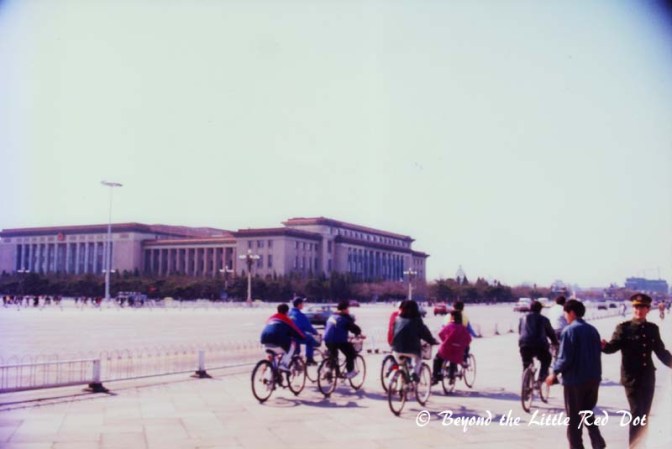My first trip behind the bamboo curtain was a business trip in 1997. It was a trip to give technical training to one of our Chinese customers who had bought our equipment. Normally, such training sessions are not stressful. But as this customer was in China, I had to give my training in Mandarin. As an indifferent student of the Chinese language, and attaining just a bare minimum passing grade in school, I was beginning to wonder if I should had been paying more attention in Chinese language classes.
Speaking Mandarin for everyday conversations is normal for me in Singapore. But to give a one week training session with engineering terms translated to Mandarin is a different ballgame altogether. I had to learn the various technical terms in Mandarin, and to prepare for the training, I also managed to buy an English/Chinese dictionary of mechanical engineering terms from the now defunct Borders. I never knew such dictionaries existed until then.
China opened up it’s economy to the world in 1978. By 1997, China was already privatizing many of it’s more profitable state owned enterprises (SOE). In fact, the customer where I was to conduct the training was a SOE undergoing the process of privatization. I was met at Beijing airport by the engineer whom I was supposed to train. I was quite surprised to be met by a lady, after all it’s not often that we encounter women in engineering. The training went on smoothly since I had prepared myself for it, although I probably made many mistakes in my Mandarin, but it probably improved more in that one week than I had ever learnt in school.
Besides the training, my trainee was also eager to learn about the world outside China. Most of it’s citizens then never had a chance to travel outside China and whatever news they could get of the outside world that was not censored by the Communist Party was welcomed. At the same time, I heard from my trainee about her life as a child under Mao Zedong’s cultural revolution where her whole family was sent to the countryside to be re-educated to be farmers. And she was wondering why at that time people would want to believe and follow such a leader into madness. It was a sobering thing to hear since most of us lead sheltered lives and are quite oblivious to the troubles of the world around us.
After the training, I was also instructed by my boss to meet her in Shanghai the following week for meetings with more customers, and a flight was booked for me on the following Monday. So I asked my boss what I should do during the weekend in Beijing since the training ended on Friday. “Go sight seeing” was the answer. That’s what I call mixing business with pleasure.
I decided to take a day tour of Beijing from my hotel’s travel desk since I didn’t have much time to plan any trips on my own time. So it was just me and another hotel guest who turned up on Saturday morning at the hotel’s travel desk. The hotel provided a car and driver for the 2 of us. Nice! I thought, a private tour. The first stop was the Forbidden Palace, where the past emperors of China lived and ruled for centuries.





There are only so many huge courtyards and halls to see before it gets somewhat boring. The Forbidden Palace is really huge and I heard that the Emperors rarely left the Palace to visit the city since they could spend their entire lifetime just inside. There are also several side buildings which contain museums about imperial life or Chinese history and arts. However, they require a separate admission charge. As you can see, the rise of Chinese capitalism was really getting on.


After the Forbidden Palace, our next stop was the Summer Palace which was built as a park for the royal family.





Now it was on to our last stop of the day, the Temple of Heaven. This was used by the emperors to pray for a good harvest every year. Surrounding the temple complex is a large park where people go to enjoy the playgrounds and exercise facilities.





There are many other places of imperial interest like the ruins of the Old Summer Palace which was destroyed during the Opium Wars. However, if you have only a short time to visit Beijing like one day, these 3 places would do nicely to appreciate the imperial history of China.
Even I struggled a little when I had to train my Chinese customers in Mandarin with terminologies, I can totally imagine the obstacles you had to face.